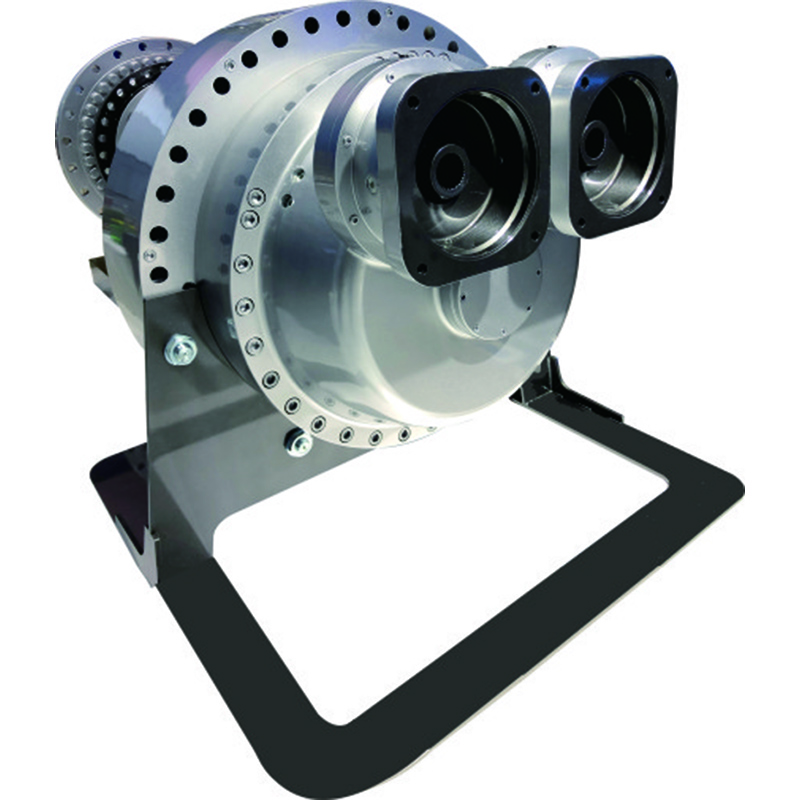In the lifting operations of construction machinery, who ensures the crane’s precise rotation and stable load-bearing capacity? In the operation of equipment on ship decks, who guarantees the efficient transmission and reliable safety of anchor winches and hoists? In the high-intensity operations of mining machinery, who supports the equipment’s continuous power output and minimizes failures? As the “power transmission hub” of the equipment industry, Flag reducers empower the upgrading of equipment in multiple industries with their superior performance, becoming the “invisible force” for the efficient operation of high-end equipment.
Having cultivated the transmission field for many years, Ningbo Flag-up Transmission, relying on the product philosophy of “innovative design and lean manufacturing,” has built a reducer product matrix covering multiple scenarios. Among them, the FHZ series rotary drive reducers and the FFT series shell-rotation drive reducers, two core categories, have become industry benchmark products due to their modular design, high load-bearing capacity, and stable reliability. The company has not only passed the China Classification Society (CCS) product certification and ISO9001:2015 quality system certification, but also ensures that every reducer can adapt to complex working conditions through stringent quality control standards.
In terms of functional characteristics, Flag-up reducers are truly comprehensive. Taking the FHZ series slewing drive reducer as an example, its built-in multi-plate wet parking brake and cantilever planetary reduction structure effectively improve the braking safety and transmission efficiency of the equipment. In large crane slewing operations, it can achieve a maximum output torque of 93,300 N·m, with a flexible transmission ratio covering multiple ranges from 12.79 to 216. It is compatible with both hydraulic motor and electric motor dual drive modes, maintaining stable operation in both low-speed heavy-load and high-speed light-load scenarios, reducing heat generation and internal load losses. The FFT series shell-driven reducer focuses on the needs of winch drives and track drives, with a maximum output torque of 264,000 N·m and a maximum static braking torque of 1,910 N·m. In mining winches and port lifting equipment, it can precisely control power transmission, ensuring the long-term durability of equipment under high-intensity operation.
In terms of application coverage, FFT reducers have deeply penetrated key fields such as construction machinery, marine machinery, mining machinery, port machinery, and wind power generation. In the construction machinery field, it provides stable rotational power for tracked pile drivers and hydraulic hammer drivers, ensuring construction accuracy; in the marine machinery field, it is adapted to the slewing system of marine cranes, meeting the impact and corrosion resistance requirements of complex marine environments; in the wind power generation field, it supports the precise transmission of wind turbine equipment, improving energy conversion efficiency; and even in agricultural machinery and environmental protection machinery, it can be found, truly achieving “one machine, multiple functions, empowering all scenarios.”
It is worth noting that FFT reducers’ “customization advantages” in design and service make them the first choice for customers. The company’s R&D center, guided by the design principles of innovation, practicality, reliability, and economy, can adjust core parameters of the reducer, such as transmission ratio, mounting flange structure, and braking method, according to the customer’s equipment installation space, load requirements, and operating environment. For example, it provides compact structural designs for equipment in confined spaces; employs special coatings and sealing processes for highly corrosive marine environments; and optimizes the braking system response speed for high-frequency start-stop requirements. This “customized” service model allows the reducer to adapt to both standardized equipment and the personalized needs of non-standard equipment.
“Although the reducer is not a ‘surface component’ of the equipment, it is the ‘core hub’ that determines the equipment’s performance,” said the Ningbo Flag Transmission Technology team. In the future, the company will continue to deepen its research and development of reducer technology, focusing on three major directions: “higher efficiency, longer lifespan, and better adaptability to various scenarios.” It will upgrade the mechanical efficiency and intelligence level of its products to provide global customers with better transmission solutions, allowing this “invisible power” to continuously drive high-end equipment towards a higher quality development stage.
Post time: Nov-25-2025

